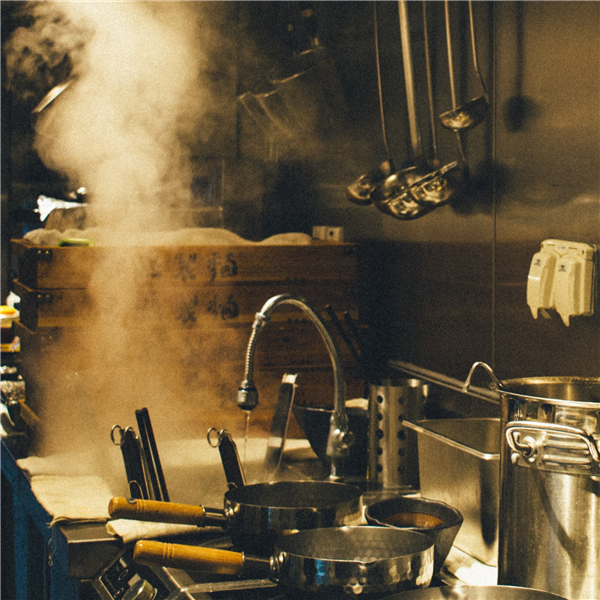
Grease traps are now a legal requirement for any business that deals with hot food. Nowadays, there are a number of laws and regulations that have been enforced by parliament. As a result, commercial kitchens now have a duty of care and must follow specific legal obligations related to the management of FOG (fats, oil and grease) produced at their premises.
The British Building Regulation Act, document H, section 2.21, states that any premise that serves hot food and is connected to the main drainage system , must be fitted with a grease trap/separator to prevent blockage. The following establishments must comply and have a grease trap and interceptors installed by law:
- Restaurants
- Cafes, pubs and bars
- Fast food restaurants and takeaways
- Bakeries
- Hotels and guest houses
- Hospitals and healthcare facilities
- Industrial process applications
- Manufacturing operations
Why do I need a grease trap?
Grease traps are essential to any establishment that serves hot food. The purpose of a grease trap is to collect and reduce the amount of FOG build-up that can enter the main sewer system. If grease does enter the main sewer system near your establishment, this can cause foul odours, as well as creating blockages and pest infections.
If this was to occur and you do not own a grease trap, your local water company or council may require you have one installed or contact you because your establishment has caused a blockage in the sewer line. This is because when grease solidifies at room temperatures, it will cause a major blockage in the sewer line and cause SSOs (sanitary sewer overflows).
If this does occur, solving this type of problem requires a large amount of manpower and money to fix, which the water company or authority may charge back to you because your restaurant didn’t own a grease trap.
How effective are they?
The efficiency of a grease trap depends on a number of factors, including kitchen design, kitchen location, your drainage systems and the type of kitchen practices you follow. Each grease trap location is unique. Most grease traps will retain between 50% and 90% of all FOG that flows through them. However, owning a grease trap doesn’t mean you can leave them unmaintained. A grease trap should be professionally maintained and serviced regularly.
If you want to increase the efficiency of your grease trap, you can choose to own either a below-ground grease trap or an above-ground grease trap. Incorporating a biological treatment will help keep pipework free flowing as well.
The Different Types of Grease Traps
Above-Ground Grease Traps – These grease traps are accessible for internal and external installations. They can either be installed adjacent to the contaminating sink or near other equipment within the kitchen area. For larger units, they can also be centrally located or found within a plant room to take the complete wastewater drainage line from the entire kitchen. Above-ground grease traps are great because they can be passive manual traps/hydro-mechanical traps or fully automatic self-cleaning systems.
Above-ground grease traps are a popular choice for installation because there is a vast product range and because they facilitate easy location access. They can be installed in existing kitchens or designed into a new-build business.
Below-Ground Grease Traps – Unlike above-ground grease traps, below-ground grease traps can only be installed internally or externally if there is space available. However, below-ground grease traps do not need regular maintenance by site staff, as a vacuum tanker can be used to efficiently empty and remove the trapped FOG from kitchen waste.
These units also trap food-waste and sludge deposits that become separated from the contaminated water. Some units have a separate separation tanker, whilst others can include a double-depth sludge trap volume. These are ideal for establishments that have a multiple outlet flow and require a large grease capacity with no intervention from on-site staff.
Biological Grease Treatment – Biological grease treatment is a unique method of breaking down grease using a specially designed grease-degrading micro-organism. This is all possible thanks to recent advancements in biotechnology. The biological dosing system can be used instead of grease traps on specific contamination areas or as an addition to improve existing interceptors. They are suitable for the treatment of FOG in sewage treatment plants and pumping stations.
At Aqua Mundus, our biological fluid works on FOG waste entering drainage pipework and the grease-trap system in two distinct ways. The biological fluid contains an enzyme that supports the natural biological process of decomposing long- molecular-chain FOGs into a manageable solution to be digested by micro-organisms. We recommend biological dosing systems for:
- Sewage treatment systems
- Grease trap treatments
- Stand-alone grease management systems
- Pumping/lift stations
If your food business still doesn’t have the right grease traps in place or if you simply want to improve your existing systems to avoid potential issues in the future, don’t delay. Contact the experts at Aqua Mundus today.